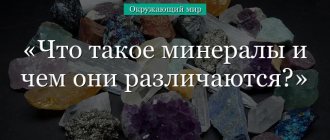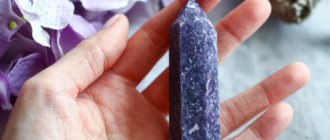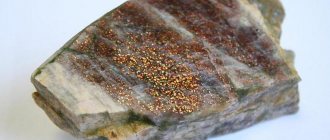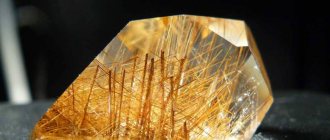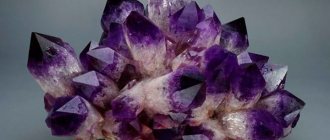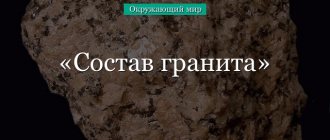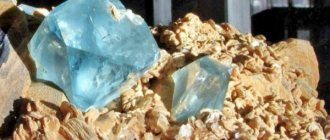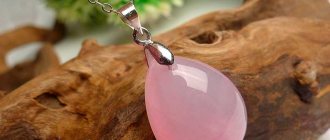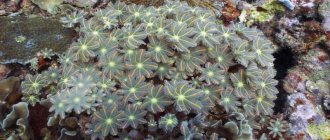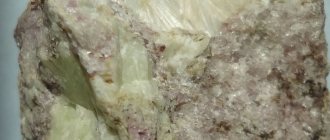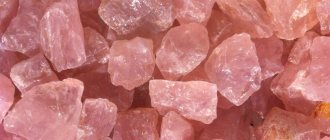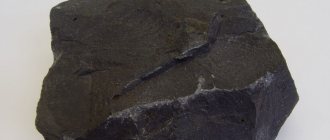- Reports and messages
- Miscellaneous
- Quartz
The most common mineral in nature is quartz.
Small pieces of this natural material are included in the soil. Natural, untouched quartz looks like a clear hexagonal crystal. Most often it feels very cold to the touch. If, at the time of formation, other rocks, such as iron, got into it, then quartz will lose its properties. Its color will change and its transparency will be lost. The color of the mineral, of course, is influenced by the conditions where it is formed. Most often it can be black, purple, red or yellow. But there are also other colors. Quartz is interesting not only for the variety of its colors, its sizes can be very diverse. This mineral is found in both huge and quite small sizes. We can say that small grains of quartz sand can be found everywhere. They can be found wherever there is any sand, and it doesn’t matter whether it’s a playground or a beach. Quartz gained its widespread use in the making of amulets. It is from its stone that jewelry is made that brings people luck and love. Many quartz stones are set in silver; it looks very beautiful. In addition to beauty, quartz has healing properties. Since ancient times, people have noticed that water filtered using a quartz filter is very useful. Thanks to washing with quartz water, the skin of the face acquires tone and youth, and most importantly, acne disappears. In addition, ordinary water is infused with quartz; it is used exclusively for medicinal purposes. Jewelry made from quartz is recommended to be worn by people who have breathing problems.
Yes, quartz is a beautiful mineral, which is why jewelers and craftsmen continue to make magnificent quartz jewelry even today. In some ways, they are not at all inferior to many precious stones. Many collectors and simply lovers of everything beautiful collect amazing decorative items made of quartz on their shelves. Many figurines, bowls and magnificent vases decorate many homes, delighting not only the owners, but also their guests. Since ancient times, people have been fascinated by quartz. It did not take much time to find it, and to extract this mineral, it was not necessary to use complex equipment. Even primitive people made many items for hunting and cooking from quartz. When scientists and archaeologists conducted excavations in Mesopotamia, they discovered not only tools, but also a variety of quartz jewelry.
Time did not stand still. Many masters have learned to improve their craft. And now lamps, glasses and many other beautiful objects are made from quartz. Products made from quartz are always highly prized, especially if they are beautifully decorated with silver or gold.
Today, many people counterfeit quartz. But it is very easy to distinguish. If bubbles are visible inside the mineral, then it is not a real mineral. It is also interesting that this mineral is inserted into watches. It is believed that thanks to this the watch shows the exact time. Although quartz is not a rare stone, people have learned to make it unique and valuable. This brings not only benefits, but also great joy.
Description for children 2, 3, 4, 5 grades. The world around us
How it is formed, origin
Quartz has been known to people since ancient times. It is easy to detect and obtain even without the use of special equipment. In addition, it is durable and beautiful. Ancient people made from it not only jewelry, but also tools - axes, knives, chippers.
The conditions for the formation of the mineral are different. It is the rock-forming material for most metamorphic and igneous rocks. Can crystallize directly from acidic magmas. Quartz is also found in sedimentary rocks: dolomites, limestones, etc. In them, it has the forms of geodes (closed cavities), nodules (spherical mineral aggregates), veinlets and fine-crystalline crusts. In the form of mixtures and silicates, it can itself be part of other minerals.
It belongs to the group of glass-forming oxides, that is, glass can consist mainly of this mineral.
2. Quartz is one of the most common minerals in the crust of our planet. It accounts for about 12% of the mass.
3. It is found almost everywhere.
4. Quartz is not the only type of mineral, but a whole family, it has more than ten varieties. This diversity is explained by the process of formation of the mineral and the characteristics of its composition.
5.Quartz was formed through various geological processes, mainly from magma. It is found in sedimentary rocks - limestones, dolomites, and so on. In coastal marine areas, quartz occurs in the form of rounded pebbles.
6. Minerals included in the quartz group differ in their physical, mechanical and other properties, such as hardness, color, shape, deposit, and so on.
7. Some precious stones also belong to the quartz family.
8. Stones such as aventurine, amethyst, cat's eye, hawk's eye, tiger's eye, sapphire, hairy, rock crystal, citrine, chalcedony, morion and rauchtopaz belong to the quartz family.
9.The most common colors of quartz are clear, white, pink, purple, brown, yellow, blue and green.
10. Most often, quartz is found as part of granite, but sometimes on its own. True, not often, since this requires the coincidence of a number of geological conditions.
11. In its pure, unclouded form, quartz is always either transparent or white. The “purest” quartz that does not contain impurities is rock crystal. The name speaks for itself: the mineral mined in the caves of hydrothermal veins is absolutely transparent.
12. There are also no additional substances in the composition of milky quartz, but due to internal gas bubbles and tiny cracks, the stone has a milky white matte color.
13. One of the brightest and most sought after is honey-golden citrine, which gets its sunny color thanks to iron impurities.
14. When we say “quartz,” we most often mean a transparent green variety of the mineral called prasiolite, or prase. Its shade depends on the inclusion of needle-shaped actinolite crystals in the stone.
15. Quartz rocks also include some ornamental stones, such as carnelian, agate and jasper.
16.Agate has many tones: from classic white, black and red to whitened shades of blue and pink.
17.Shimmering, looking like a starry sky, aventurine is one of the most mysterious quartz. People did not immediately learn that the shine of the mineral is given by the smallest flakes of mica and hematite.
18. In human history, quartz has been known since before our era. During excavations in Mesopotamia, beads made of quartz were discovered, and during excavations of Mayan cities, a skull made of quartz was discovered.
19.Quartz is part of sand. Quartz sand deposits play a special role in industry.
20.The origin of the word “quartz” is German, but has several meanings. So, according to one version, it comes from the German “quarz” - solid; according to another version, from the German “querklüfterz” or “quererz”, which literally translates as “ore of secant veins.”
21. Granite is so shiny precisely because any of its varieties partly consists of quartz.
22. Quartz has been known for several millennia, so archaeologists are discovering quite interesting things at the sites of ancient civilizations. Thus, in the vicinity of Mycenae, a rock crystal vase in the shape of a bird was found, dating back to the 16th century BC. Due to the hardness of the stone, the find was preserved almost unharmed.
23.Precious sunglasses were found in the legendary tomb of the Egyptian pharaoh Tutankhamun. The round lenses of the accessory were made of two thinnest morion crystals connected by bronze plates.
24. But the Roman emperor Nero had several goblets made of solid rock crystals. The choice of material was not accidental. Quartz, which has high thermal conductivity, kept drinks cool even in the heat.
25.Despite the widespread occurrence of quartz in natural conditions - nature, artificial methods for the production of quartz have been developed and patented.
ARTIFICIAL QUARTZ
26. One of these methods is the hydrothermal method. According to mineralogy experts, artificial quartz is more homogeneous, and the distribution of impurities in it is more uniform than in quartz of natural origin.
27. Piezo-optical quartz is obtained from quartz of artificial origin; it has also found wide application in the production of jewelry, since in this case it is possible to obtain quartz of any color and its required saturation (green, blue, blue).
28. The process of artificial synthesis of quartz is quite simple and cheap, so most of it is produced in this way.
29. Quartz, synthesized artificially, is purer and more beautiful than natural, in no way inferior to it.
30. And the most beautiful blue quartz can be created in this way only - it does not occur in nature.
QUARTZ PRODUCTION PLANT IN THE TOWN OF GUS - KHRUSTALNY
31. The largest production of artificial quartz in the Russian Federation is located in Gus-Khrustalny and Yuzhnouralsk.
32.Artificial quartz has been produced in Yuzhnouralsk since 1962. The quartz produced at this plant was later used for the needs of the radio-electronic industry, and was also exported to other countries.
33.The main industrial scale of production of sheet glass, glass containers, crystal and others. Glass products made from artificial quartz are also produced in Yuzhnouralsk at the JSC Quartz enterprise.
34. Quartz is a mineral with a crystalline structure. The crystal lattice of quartz is a hexagonal pseudo-hexagonal prism, and quartz single crystals have both left- and right-handed shapes.
35.Depending on the rocks of what origin (igneous, metamorphic, sedimentary) quartz crystals are present, they may contain “grains”, “veins”, “brushes” of other minerals.
36. Quartz in its “pure” form, that is, without inclusions of other minerals or chemical elements, is a colorless or white mineral.
37.If quartz contains inclusions of other minerals or chemical elements, then the color of quartz is very diverse - from yellow (citrine) to black (morion).
38.Quartz is characterized by a non-metallic luster, high hardness and lack of cleavage.
39. From a chemical point of view, quartz is silicon (IV) oxide, the chemical formula is SiO2. Belongs to the group of acid oxides. Melting point - 1713-1728° C. It is resistant to aggressive environments; able to dissolve in alkali melts, as well as hydrogen fluoride (hydrofluoric acid).
40. In the National Repository of France there are unique drinking cups and an urn made of rock crystal and dating from the reign of Emperor Nero.
41. In the USA, the crystal seal is kept in the US National Museum of Natural History.
42. The largest quartz found in our country is kept in the museum of the St. Petersburg Mining Institute. A native mineral more than 1 meter in height appeared in the museum’s collection relatively recently. Thousands of townspeople saw this unique exhibit every day, without knowing it. The thing is that initially the crystal served as a street cabinet.
43. In Russia, one of the most unique products made of quartz (rock crystal) is a samovar made especially for Peter I; it is in the collection of the Armory Chamber of the Russian Federation.
44. This mineral has a variety of colors, making it popular for decorative items and glass production.
45.Ordinary clay consists mainly of quartz. And this, as you know, is a multifunctional building (and not only) material that has high heat storage properties.
46. Quartz is used in many industries. It is used in optical instruments, in ultrasound generators, in telephone and radio equipment (as a piezoelectric), in electronic devices (a quartz resonator is a component of devices for stabilizing the frequency of electronic generators).
47. Quartz is also used in the production of watches and lenses.
48. In the watch industry, quartz watches are considered to be the highest quality. It's all about the unique properties of the mineral. The battery acts on the quartz with current, which causes stable vibrations in the stone. The size of the quartz is selected so that the oscillation frequency is 32768 Hz, thanks to which the quartz movement is considered the most reliable and durable.
49. Quartz is also widely used in the production of jewelry. Jewelers often give quartz various fancy cuts, so it looks incredibly beautiful in jewelry.
50. To decorate products, designers often choose blue or delicate rose quartz that looks like a frozen piece of ice.
ROSE QUARTZ
51. Among the varieties of quartz, the most famous and widely used in the production of jewelry are: aventurine, agate, amethyst, moreon, rose quartz, chalcedony, citrine, onyx, tiger's eye and cat's eye.
52.Each of these minerals has a characteristic color and properties, for example, amethyst is a purple mineral, which is explained by the presence in its composition of a coloring organic substance of an unidentified structure.
53. The yellowish color of aventurine is due to inclusions of mica, hematite, and sometimes iron hydroxides; the presence of titanium and iron determines the black color of morion, and so on.
54. Now almost a third of the entire range of jewelry is jewelry with quartz. Vibrant colors, durability and a wide selection of shades provide designers with creative freedom.
55.Quartz is used in the most elegant evening jewelry, voluminous earrings and rings, as well as pendants and bracelets. The mineral is often given a fancy cut, which enhances the shine of the stone and makes it even more attractive.
56.Gold jewelry with iridescent yellow-green quartz looks especially unusual. Wanting to emphasize the greenish tint of prasiolite, designers combine the stone with amethysts, rauchtopazes, cubic zirconias and diamonds.
57. To distinguish natural quartz (quartz of natural origin) from artificial or glass (since the most rare varieties of quartz are often counterfeited), it is necessary to pass over the surface of the quartz with a sharp or blunt object, such as a knife or stone, and if the quartz is of natural origin, then there will be no traces left on its surface.
58. There is another way - if you lick the surface of a natural gem and artificial quartz with your tongue, then the surface of the gem will always feel colder. There are other methods, but they are usually used by jewelers.
59. There is an opinion that quartz has healing and magical properties. So, there is even a method of treating a person with the help of gems - lithotherapy.
60. Some believe that quartz prevents colds and other respiratory diseases. In folk medicine, water infused with quartz is used, that is, “quartz water” for rejuvenation, as lotions and compresses for burns and skin diseases.
61.Quartz is an essential trace element for digestion, metabolic processes in the body, skin health and the removal of toxins. In its pure form it is used in the treatment of asthma, diabetes and impotence.
62.To this day, many tribes eat earth or clay as an additive to food, obtaining from it the microelements necessary for the body.
63. In the form of clay, quartz is used in numerous masks for the face and body, healing and rejuvenating the skin.
64. According to beliefs, quartz, regardless of its variety, attracts love, luck, success and material wealth, and, in addition, each mineral of the quartz group also has a whole range of magical properties unique to it.
65.Astrologers believe that some zodiac signs can use quartz products as amulets and amulets, while others cannot. Thus, quartz products are suitable for Scorpios, Libra, Aquarius, Taurus, Aries, Leo and Sagittarius and are not suitable for Virgo and Gemini.
66. Quartz is found in such familiar foods as strawberries, mangoes, cucumbers, leeks, green beans, celery and asparagus. Therefore, to compensate for the quartz deficiency, it is not necessary to look for clay.
67. Quartz crystals are often found symmetrically fused together, with all parts absolutely identical to each other.
68. In Asia, dark blue quartz was called “Tamerlane’s stone.”
69.Off the coast of North America, quartz was known as the Mexican diamond, and the Romans considered it a gift from Venus.
70. It is known that in nature there are significant reserves of quartz of various shades. Despite this, Russian scientists decided to play it safe and patented a technology for artificially coloring the mineral.
photo from the Internet
Composition, general properties
Translated from Middle High German, the name quartz means “hard.” This mineral is silicon oxide. The chemical formula of quartz is SiO2 (silicon oxide). Melting point is about +1728 degrees. This information may differ in different sources, since the mineral melt is characterized by increased viscosity and it is difficult to accurately determine the temperature. Quartz is a dielectric , meaning it does not conduct or practically does not conduct electrical current. The density of the mineral is in the range from 2.6 to 2.65 g/cm³. Its hardness on the 10-point Mohs scale is 7.
The crystals have a characteristic hexagonal pseudohexagonal prismatic structure. They are most often colorless, but may have a white color due to the large number of cracks. Due to various impurities, including inclusions of other minerals (for example, iron oxides), they can acquire other colors.
Quartz is characterized by polymorphism, that is, with the same chemical formula, a mineral can have a different crystal lattice structure. Due to its different structure, coesite, tridymite, and cristobalite are found in nature.
Another polymorph, stishovite, was first produced artificially at very high pressure and then discovered in rocks at the Arizona meteorite crater.
For children in grade 2, the description of the quartz mineral should be simpler. We can only give a brief description of it, in accordance with the age characteristics of the students. Information about the chemical formula and composition of a mineral is still difficult for them; they are studied in high school. In a course called "The World Around You," a message might include, for example, information about types of minerals. This mineral has many types and they are quite attractive in appearance. Therefore, such information is of great interest to children aged 7-8 years.
Physicochemical characteristics of rose quartz
Quartz itself, without impurities, is a watery-transparent stone without color.
When such specimens were found in the Alps, they were mistakenly called crystal or mountain water. The pink variety, due to metal impurities, acquires a rose-red or pink color, but may fade if exposed to bright sun for a long time. It rarely forms crystals, especially large ones; they are translucent or transparent and have a glassy luster. The hardness of rose quartz on the Mohs scale is 7.0. Specific gravity 2.6 g/cm3.
Varieties, their diversity
Interesting fact : there are many varieties of quartz (more than two dozen), which differ from each other primarily in color. So, this mineral can look like colorless, transparent crystals (rock crystal), a dark opaque semi-precious stone of brown or red-brown color with white and black or pinkish and yellowish patterns, respectively (onyx).
And these are not all examples. Additional material for 2nd grade children on the properties of quartz stone may include brief information about its varieties such as chalcedony, citrine, as well as cat's, tiger's and hawk's eyes. The names of the latter species arouse keen interest among students. The report may indicate that many varieties of the mineral are used to make jewelry. Carefully selected illustrations will help supplement the information and make the topic truly interesting for children.
The magical properties of rose quartz
— Advertising —
Rose quartz helps its owner feel the joy of life, love and friendship. The stone is considered the best assistant for treating heart injuries. He teaches forgiveness and true love. At the same time, the process of freeing a person from past experiences can last a very long time; old feelings and problems that have not been resolved, but are simply hidden in the depths of the soul, will surface. During this period, a person becomes extremely vulnerable and may cry often. For this reason, it is advised to carry the mineral with you and surround yourself with people who can provide help and support. During such healing, it is important to accumulate good intentions, learn to love yourself and understand that only we ourselves contain the reasons for both our troubles and our happiness. Rose quartz helps a person to open his soul, to know himself through love, and to make these feelings the basis of his future life.
In addition, rose quartz successfully relieves stress, irritability, and develops creativity and self-confidence of its owner. As a talisman, it brings mutual love, protects family happiness, increases potency, protects pregnant women, and is a source of health and longevity. It is believed that the gem will definitely help an unmarried woman to get married successfully.
Interestingly, rose quartz is used as a special pendulum that indicates negative and positive zones in apartments, houses, and gardens.
How and where is quartz mined?
This is a very common mineral, its deposits are not uncommon. Deposits have not yet been discovered only in Antarctica, but it is only a matter of time.
However, not all of them are of industrial importance. The mineral is mainly supplied to the world market by the following countries:
- USA.
- Brazil.
- Australia.
- Sri Lanka.
- Madagascar.
In addition, many countries are recognized leaders in the extraction of one type of mineral. Thus, in Russia, in the Southern Urals, the highest quality aventurines in the world are mined. It is a type of quartz that is greenish in color and has no sparkle. Beautiful rock crystal crystals are mined in Italy and France. In addition to Australian and Brazilian ones, amethysts from Germany and Armenia are also in demand among jewelers.
Quartz can be mined in three ways, depending on the characteristics of the deposit:
- Explosive. This is the least effective method, which is also harmful to the environment. As a result, as a rule, crystals of low quality are obtained, in the form of fragments, with cracks and chips. However, this method is still relevant due to its low cost.
- Air cushion method. It consists in the fact that the rock splits under the influence of high pressure. It is formed by pumping air into a special container placed in a well in the field. With this method, damage to the rock is insignificant.
- Stone cutter method. The most gentle, but also the most expensive. Involves the use of special equipment, the cost of which is quite high.
In addition, quartz is synthesized artificially.
History of Rose Quartz
The first rose quartz beads discovered date back to 7000 BC.
In those days in Mesopotamia, the stone was used to make jewelry for women. Rose quartz was also valued by residents of the East, where it was called the “stone of the heart,” and it was believed that it fills the heart of those who look at it with tenderness. The ancient Egyptians and Romans found use of rose quartz powder to improve the properties of creams and maintain youthful and smooth skin. It was then believed that rose quartz was a gift to people from the god of love, Eros, to give the world compassion and love. There was also a belief that the gem was the juice of the Earth, and made it possible to feel unity with everything that is on our planet. — Advertising —
Large samples of rose quartz have not been found either in earlier times or now. The mineral is not found in druses and large crystals. It is usually found in the form of scatterings of small pebbles.
Thanks to these properties, rose quartz was widely used in panels and mosaics, and also became a popular stone in jewelry. It is found in the form of inserts in earrings and necklaces, rings and beads, bracelets and pendants. In addition, rosaries, keychains, and figurines are made from rose quartz.
Application of the mineral
It belongs to widespread mineral resources. Artificial and natural quartz are used in the following areas:
- Optics (in various devices).
- Manufacturing (ceramics, glass industry). Due to their piezoelectric properties, they are also used in radio and telephone equipment. Used in ultrasound generators. A large amount of quartz raw materials is used for the production of fire-resistant materials, as well as quartz glass, from which products are made that are resistant to temperature fluctuations. These are laboratory glassware, insulators, crucibles, etc. Optical fibers are made from quartz glass.
- Jewelry making. In the area of increasing interest in esoteric knowledge in recent years, amulets with different types of quartz, which are selected based on a person’s date of birth and other parameters, have become very popular.
Interesting answers
- Conifers - message report
Conifers are the only plants of their kind that remain green all year round, no matter whether it is winter or summer, green needles will always delight the human eye. As it turns out, to coniferous plants - Music
- Report message Migratory birds
There are many varieties of birds on the planet, which are similar in some ways and different in some ways. Some birds are accustomed to warm temperatures, some can overwinter in place if temperatures permit. - Jerboa - message report
The moderately hot semi-deserts and steppes of the Eastern Hemisphere are inhabited by very small rodents - jerboas. These creatures are distinguished by their characteristic appearance - a shortened body and elongated hind legs. - Writer Lev Kassil.
Life and work of Lev Abramovich Kassil (1905-1970) is one of the famous children's prose writers of the Soviet period of Russian history.
Artificial crystals
Artificial quartz has a number of advantages over natural quartz: higher chemical purity and a homogeneous structure caused by a more uniform distribution of impurities. In addition, single crystals are grown industrially, while twinned crystals are common in nature. Single crystals are more suitable for use in the optical and electronics industries.
For jewelry making, artificial quartz crystals are also more convenient, since during the growing process they can be given almost any color and shade saturation. You can also grow crystals with intended smooth transitions from one color to another. It is interesting that industrially it is possible to obtain colors that do not occur in nature or are very rare. These are blue, cyan and green quartz. For 2nd grade children, this information will also undoubtedly be interesting.
Branches of application of rose quartz
Rose quartz has been popular since ancient times as an ornamental stone and among collectors.
Samples of transparent rose quartz are considered a precious stone, and although relatively rare, they are still used in jewelry. Large transparent parts of the stone are cut and processed into cabochons. Rose quartz beads are used as inserts in a variety of jewelry.
Interesting Facts
Students become familiar with basic information about minerals already in primary school. The teacher can share the following interesting information about quartz in class:
- A mineral can react differently to temperature fluctuations. Thus, black quartz heated to +300 degrees acquires a golden color, and up to +400 it becomes transparent.
- Many people know the expression “quartz watch”. To control the accuracy of movement, they use crystals of this mineral. Watches with quartz crystals are considered the most accurate.
- Quartz lenses are much stronger than glass lenses.
These interesting facts are quite understandable for 2nd grade children. Using such information in the lesson will help to enliven perception and will contribute to better assimilation of the material.
Healing properties of rose quartz
Rose quartz has virtually no selective effect on certain organs, and in general is often used to improve the health of the body.
For this purpose, plates, beads, balls and other items based on it are used. Rose quartz is used for disorders of the nervous system, cardiovascular system and various inflammations. It effectively relieves stress, irritability, fears and anxiety. The mineral is also recommended for diseases of the lymph and lymphatic system, organs of the excretory system. The stone has a good effect on the pancreas and helps in the treatment of patients with diabetes.
Along with all other quartz, rose quartz affects a person very strongly. It is important that the person who treats another with the help of this mineral gets rid of his problems himself.
How to care for rose quartz
It is recommended not to wear products with rose quartz all the time, but to remove them at night or for a couple of days.
This is due to the fact that it has a powerful influence on a person, and its excess may not always have a positive effect. Rose quartz is a fairly durable mineral. It should be remembered that it may lose its color with prolonged exposure to sunlight. For this reason, products with this gem are stored in tightly closed boxes or in a dark place. To clean them, use warm soapy water and a soft cloth.
